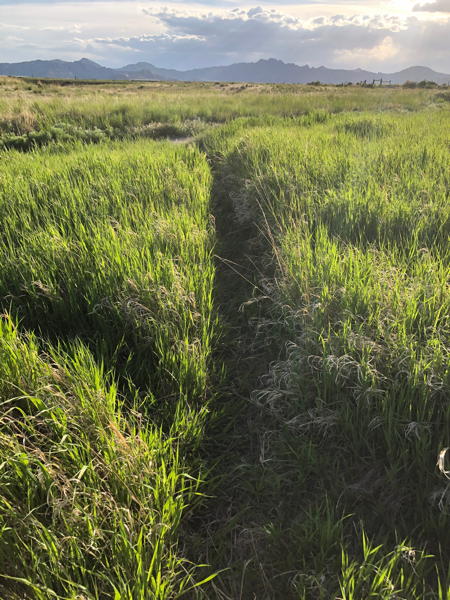Standards taught
Use the four operations to solve word problems involving distances, intervals of time, liquid volumes, masses of objects, and money, including problems involving simple fractions or decimals, and problems that require expressing measurements given in a larger unit in terms of a smaller unit.
Fraction and Time Problem
Yesterday, I posted about one of the math problems a student wrote as part of a game design lesson. In that lesson, students played the Fish Lake game, that teaches fractions and Ojibwe history. You can get that game, and all of the rest of our games and apps, for free while U.S. schools are closed. Next, the students wrote their own math problems that could be added to the game, and the answers to those problems.

Tasina and her mother both left the camp to pick berries this morning. They each walked for two hours, in opposite directions. At noon, they both turned around to come home. Tasina is 2/3 of the way back to the camp. Her mother is 3/4 of the way back. How much SOONER will her mother get back than Tasina?
I loved this student problem because under “Answer” the student had written this:
Answer: I don’t know how to solve this problem but I bet you do.
Why, yes, yes, I do know how to solve it.
Below, I give two different ways of solving this problem.
One way to solve this problem is to break it into a bunch of easier problems.
- Find how much longer until Tasina returns.
- How many minutes are in an hour? 60
- How many minutes are in two hours? 120
- How much does she have LEFT to walk? Since she already walked 2/3 of the way she has 1/3 of the way left. The WHOLE trip is 3/3. If this is not clear to you, watch this video “When is a fraction equal to 1.“
- What is 1/3 of 120? That is, what is 120 divided by 3? 40. She has 40 minutes left to walk
- Find how long until Tasina’s mother returns
- How much does SHE have left to walk? Since she has already walked 3/4 of the way, she has 1/4 left.
- You already know two hours is 120 minutes. What is 1/4 of 120 minutes, that is 120 divided by 4? 30. She has 30 minutes left to walk.
- Subtract how long until Tasina gets back from how long until her mother gets back.
40 -30 = 10. She will get back 10 minutes sooner.

Another way to solve this problem is to use equivalent fractions.
Change both fractions to fractions that are an equivalent fraction with a common denominator. Both fourths and thirds can be divided into twelfths. If you need to learn more about equivalent fractions, watch this video.
- First figure out how much further each has to walk.
- Tasina has walked 2/3 of the way back. She has 1/3 of the way back remaining.
- Her mother has walked 3/4 of the way back. She has 1/4 remaining. If this is not clear to you, watch this video “When is a fraction equal to 1.“
- Second, transform each fraction to an equivalent fraction.
- 1/3 = 4/12
- 1/4 = 3/12
- Third, find the difference between the fractions. 4/12 – 3/12 = 1/12 So, Tasina’s mother will get 1/12 of the way home before her. But how much is that in minutes?
- Find how many minutes is 1/12 of two hours? You know that one hour is 60 minutes, so two hours is 120 minutes. What is 120 divided by 12? 10. The answer is, she will get back 10 minutes sooner.

Pingback: Using Visual Models to Compare Fractions - Educational Resources for Grades 3-8